While I’m on the subject, here’s an old scoop that I have yet to add to the Knutsen Archives, so it will be new to all who didn’t see my presentation at HGG7 in Virginia 2 years ago, where I slipped it in.
I found this in a search for the misspelling “Knutson” in the MTR Archives (remember? I asked and am still waiting for volunteers to wade through this vast untapped resource…?).
Knutsen lore always maintained that Chris did all of his own, decidedly inconsistent, work on his hundreds of instruments. That was blown out of the water with the discovery of Otto Anderson, who built some amount of Knutsen’s first instruments. However, we’re not sure how long Anderson stuck around, as it is known that he moved to Green Lake (part of Seattle) in 1898.
So was Chris forced to then take up building single-handedly again?
That depends on what you decide to read into this intriguing notice in the August 25, 1900 issue of The Music Trade Review:
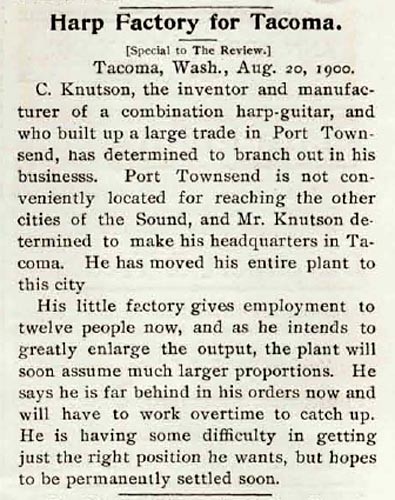
The headline reads: “Harp Factory for Tacoma.” The intriguing text continues:
(Special to The Review.)
Tacoma, Wash, Aug. 20, 1900.
C. Knutson, the inventor and manufacturer of a combination harp-guitar, and who built up a large trade in Port Townsend, has determined to branch out in his business. Port Townsend is not conveniently located for reaching the other cities of the Sound, and Mr. Knutson determined to make his headquarters in Tacoma. He has moved his entire plant to this city.
His little factory gives employment to twelve people now, and as he intends to greatly enlarge the output, the plant will soon assume much larger proportions. He says he is far behind in his orders now and will have to work overtime to catch up. He is having some difficulty in getting just the right position he wants, but hopes to be permanently settled soon.
What the H***? Twelve employees in Port Townsend?
So what does it mean? Did he really have a dozen workers helping out with the building? I suppose it’s not impossible. In fact, the more hands helping out, the more it might explain the random levels of quality we see from instrument to instrument, and even within the same instrument. So far, we’ve yet to uncover anything but the possibility that Knutsen may have utilized his family members, just as Otto Anderson did his (The Anderson family letters describe Otto’s daughters helping him by “jumping on the boards to drive the [woodworking] machines.”). If Anderson planned to join Knutsen in Tacoma, the count of family members between them would have totaled 9 (including Chris, himself) – and I can see Knutsen stretching the definition of “employees.” But Anderson had already left for Green Bay, a part of Seattle (where he might have renewed some relationship, though we think not).
Noe & Most, the authors of the Knutsen book described how Knutsen moved to Tacoma sometime in 1900, with the new railroad terminus smack dab where he could take advantage of it (getting his instruments to the Dyer store in St. Paul one obvious outcome). The ability to reach the “other cities of the Sound” was a similar no-brainer, and Knutsen relative Jean Findlay herself helps detail the world of the Puget Sound steamboats (some of which certainly carried our own Chris around with his harp guitar wares) in the book, The Mosquito Fleet of South Puget Sound.
Later, Tom Noe told me he imagined the Tacoma move taking place in the summer, while the girls were out of school. This new article, dispatched on August 20, 1900, implies that Knutsen had indeed already established his headquarters there. Interestingly, it closes with the (rather negative) admission that Knutsen was “having some difficulty in getting just the right position” and that he wasn’t quite settled permanently. This should not surprise us – Knutsen had 3 known addresses in Tacoma (listed in 1901, 1903 & 1905), as given by Noe & Most. The location this article refers to may have been the first of those ( 1001 South J. Street), or perhaps this was a fourth (chronologically first), unrecorded address.
Regardless, Noe & Most found that Knutsen’s home and business addresses were invariably the same, so the “Factory” producing the harp guitars was almost certainly a small, first floor of this new residence.
Do I picture a professional team of a dozen seasoned luthiers in a tight assembly line jammed into this space? Not really. I tend to envision Knutsen himself, woodchips flying, as family members and friends are put to whatever use he can find.
Either way, there is more story here. The Knutsen mystery never ends.

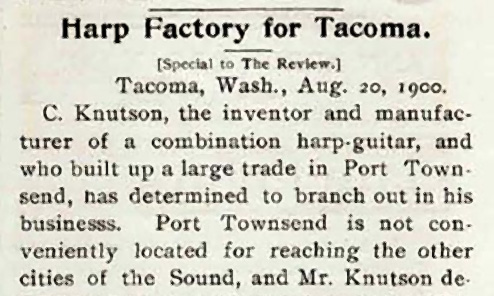
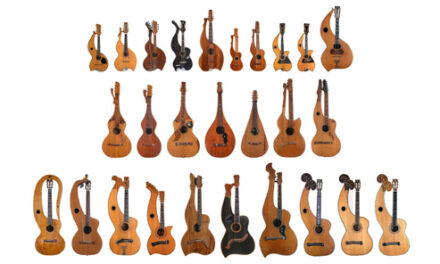
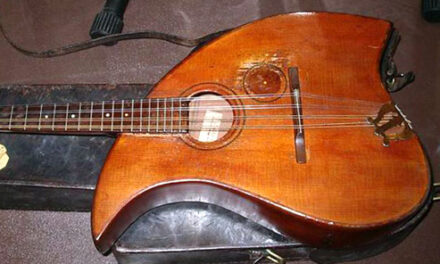
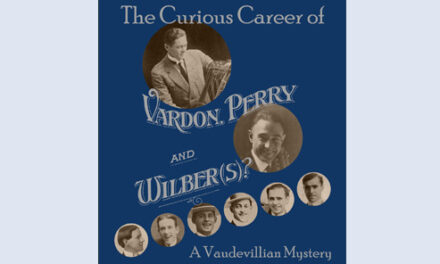
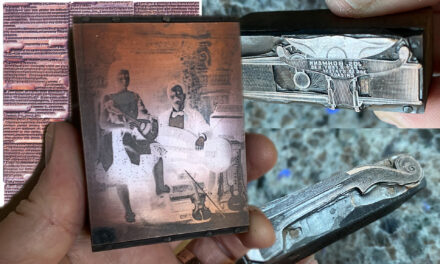
I am the owner of a Knutson Harp guitar that was once the property of my grandfather. I had always believed that the guitar had made it’s way to Tacoma as part of the immigration of my family first to America and later to the Puget Sound area from the Midwest. I have photos of it being played as well as the camera that took them. After ready your blog I may have to return to my boxes of ephemera with a different perspective. Every location you describe is familiar to me, including the North Dakota connection. I may be able to fill in some detail. Either way, thank you for creating this blog.
Wow. That’s a really intriguing article to find. But I agree with Gregg–those numerous employees no doubt included as many family members as he could recruit.
In 1901 Chris’s younger brother Eddie Cammon, came to Tacoma for a year and boarded at the foot of 11th St, down the hill from 1001 So. J (Chris’s home). Eddie is listed in the 1901 Tacoma directory as a “boat builder, Andrew Foss.” (Andrew and his wife Thea are famous for founding the Foss Tug and Barge dynasty and the foot of 11th St is where it all started.) Eddie, from southestern North Dakota, only lasted a year in the wet, hilly Northwest, though while he was here, I have no doubt he lent Chris a hand with the harp guitars.
By 1905 both Chris’s daughters were married and living at home with Chris and Anna, now residing at 903 So. Yakima. Sons-in-law James Herbert Pickles (Bertha) and Thomas Rousseau (Evaulda) probably also pitched in. though I doubt sanding guitars was their idea of a long-term career choice. In the directories, Pickles was listed as a carpenter and later as a knot sawyer for two different lumber companies.
I don’t know what happened to Bertha’s husband–this is the last I find him mentioned, but Tom and Evaulda seem to have struck out on their own and did not spend so much of their lives living with Chris and Anna. Their next address is south of Tacoma in Chehalis, Washington, that same year. In fact, by October 1905, Chris and Anna had moved to Seattle where their third daughter, Myrtle was born (in October 1905).
As Tom and Dan point out in their book, Chris didn’t seem to like owning property. I can’t prove this, but I think Anna’s mother, Edwardina Cammen, probably died in 1900. Chris and Anna would have inherited her house in Port Townsend, and they would have sold it to finance the move to Tacoma. Yes, Port Townsend was out of the way and had failed in its bid to become the railroad terminus–Tacoma got that honor instead.
And in fact, Chris’s Tacoma locations are not very far from Union Station–an easy downhill walk, though a hefty climb going home. Much easier than shipping goods by steamboat from Port Townsend to be offloaded in Tacoma and moved to the train. At this time, the main dock was in Old Tacoma–not close to the train station. Much less risk of damage if Chris could take things to the railway station himself.
That article sounds much more grandiose than what I believe was the reality of Chris’s manufacturing business.
Wow! I’m trying to imagine the circumstances that would lead to that article being written.. A lot of his ads/labels sound like a man proud of his accomplishments and wanting some PR (“Sole Patentee”, et. al.). But there are so few actual instruments it doesn’t seem plausible that he could be overflowing with orders (unless it’s just usual purple-industry-prose). Of course more and more Knutsens keep popping up out of the woodwork, so who knows what his production really was like.. And then there’s that quote from Jeanette Detlor’s Mom..
Could Knutsen have had a “factory” while in LA? With actual employees? Hmm… Some of the addresses are more likely than others. I need to show you what I’ve found (including photos of the actual buildings) and maybe together with Tom and Ben we can come to some sort of a conclusion. Some of the stuff I think Tom (or maybe it was Dan?) already knows – there are passages in the Noe/Most book that would not make sense unless you knew what the buildings looked like in 1914-30. I was wanting to wait until my epic-novel of an article got posted to discuss it with Tom, but you know how that went..